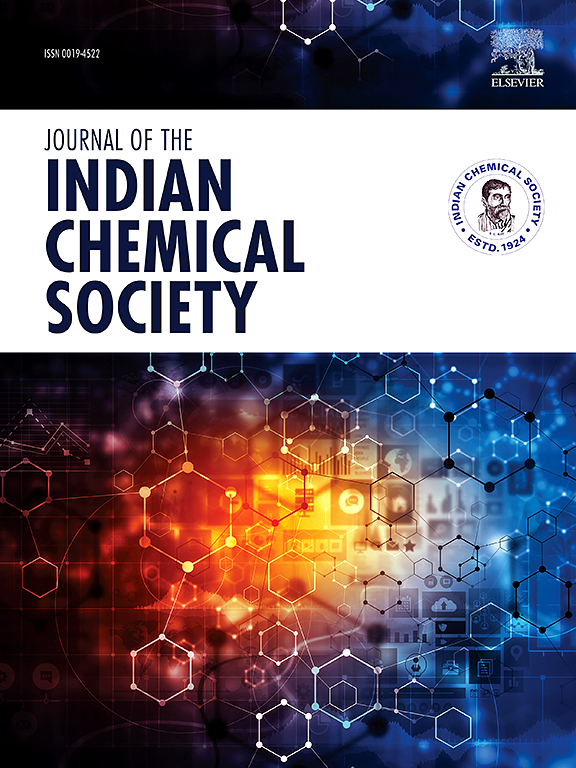创新的紫外导数分光光度法同时定量磺胺二甲氧嘧啶和甲硝唑
IF 3.2
4区 化学
Q2 CHEMISTRY, MULTIDISCIPLINARY
引用次数: 0
摘要
本研究建立了一种基于导数分光光度法同时测定兽药中磺胺二甲氧嘧啶(SDM)和甲硝唑(MTZ)的分析方法,该方法无需预先分离。该方法以乙腈PA为溶剂,室温(25±2℃)。MTZ在320 nm处采用零阶分光光度法测定,SDM在266 nm处采用一阶分光光度法测定。所开发方法的分析验证证明了稳健的结果,相关系数(r) >;在3.0 ~ 21.0 μg mL−1的浓度范围内0.990,满意的检出限(MTZ: 0.21 μg mL−1;SDM: 0.17 μg mL−1)和定量(MTZ: 0.63 μg mL−1;SDM: 0.51 μg mL−1),精密度(相对标准偏差(RSD) <;1.9)和准确度(回收率98.0 ~ 102.0%)。该方法操作简单,成本低,可用于两药固定剂量联合用药的常规分析和质量控制。本文章由计算机程序翻译,如有差异,请以英文原文为准。

Innovative UV derivative spectrophotometric method for simultaneous quantification of sulfadimethoxine and metronidazole
This study developed and validated an analytical method based on derivative spectrophotometry for the simultaneous determination of sulfadimethoxine (SDM) and metronidazole (MTZ) in veterinary medicines, without the need for prior separation of the drugs. The method employed acetonitrile PA as the solvent at room temperature (25 ± 2 °C). MTZ was quantified using zero-order spectrophotometry at 320 nm, while SDM was determined using first-order spectrum at 266 nm, applying the zero-crossing technique. Analytical validation of the developed methods demonstrated robust results, with a correlation coefficient (r) > 0.990 in the concentration range of 3.0–21.0 μg mL−1, satisfactory limits of detection (MTZ: 0.21 μg mL−1; SDM: 0.17 μg mL−1) and quantification (MTZ: 0.63 μg mL−1; SDM: 0.51 μg mL−1), precision (relative standard deviation (RSD) < 1.9) and accuracy (recovery of 98.0–102.0 %). With operational simplicity and low cost, the developed method can be adopted for the routine analysis and quality control of medicines with a fix dose combination of these two drugs.
求助全文
通过发布文献求助,成功后即可免费获取论文全文。
去求助
来源期刊
CiteScore
3.50
自引率
7.70%
发文量
492
审稿时长
3-8 weeks
期刊介绍:
The Journal of the Indian Chemical Society publishes original, fundamental, theorical, experimental research work of highest quality in all areas of chemistry, biochemistry, medicinal chemistry, electrochemistry, agrochemistry, chemical engineering and technology, food chemistry, environmental chemistry, etc.

 求助内容:
求助内容: 应助结果提醒方式:
应助结果提醒方式:


